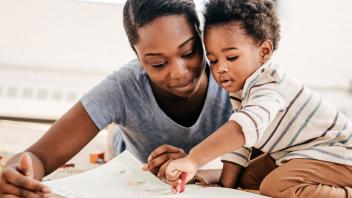Most children learn to read by age 7. Learning to read is built on a foundation of language skills that children start learning at birth a process that is both complicated and amazing. Most children develop certain skills as they move through the early stages of learning language.
The following list of such accomplishments is based on current research in the field, where studies continue and there is still much to learn. As you look over the list, keep in mind that children vary a great deal in how they develop and learn.
If you have questions or concerns about your child’s progress, talk with your child’s doctor, teacher, or a speech and language therapist. For children with any kind of disability or learning problem, the sooner they can get the special help they need, the easier it will be for them to learn.
At age 6, most first-graders can:
- Read and retell familiar stories
- Use a variety of ways to help with reading a story such as re-reading, predicting what will happen, asking questions, or using visual cues or pictures
- Decide on their own to use reading and writing for different purposes
- Read some things aloud with ease
- Identify new words by using letter-sound matches, parts of words, and their understanding of the rest of a story or printed item
- Identify an increasing number of words by sight
- Sound out and represent major sounds in a word when trying to spell
- Write about topics that mean a lot to them
- Try to use some punctuation and capitalization
